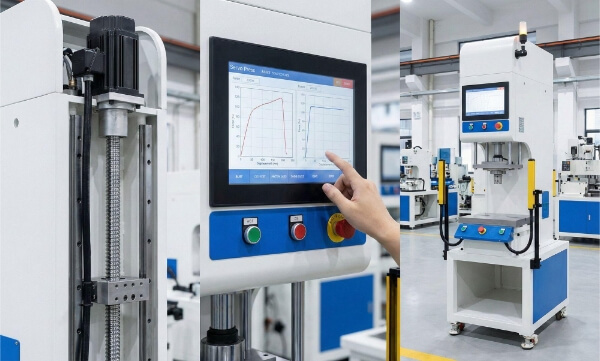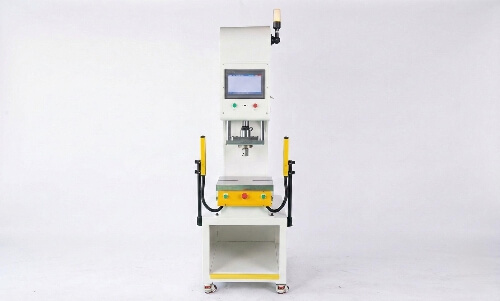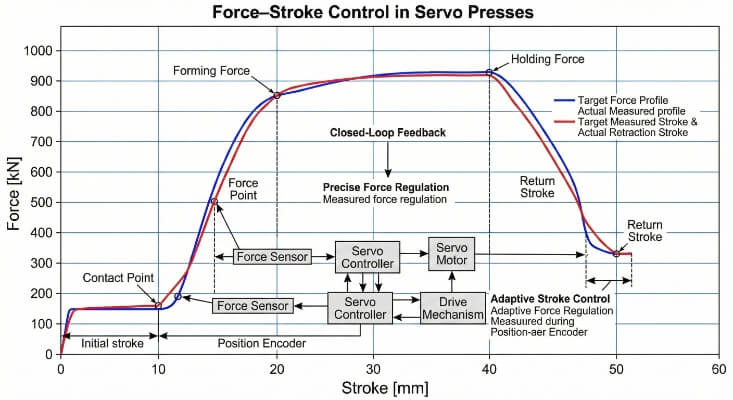Do you need help deciding between electropolishing or mechanical polishing to finish your metal? The two methods have advantages, but choosing which can make a big difference in your project’s outcome. This blog post will help you understand the differences between these two polishing methods so you can make an informed choice that suits your needs.
The electrochemical process removes a thin coating of metal from its surface. This results in a shiny, smooth finish. Mechanical polishing uses abrasive material to grind and buff metal, producing a similar result. Each method has pros and cons, which I will explore in depth.
You can choose the best technique for your project by understanding the benefits and limitations of the different techniques.
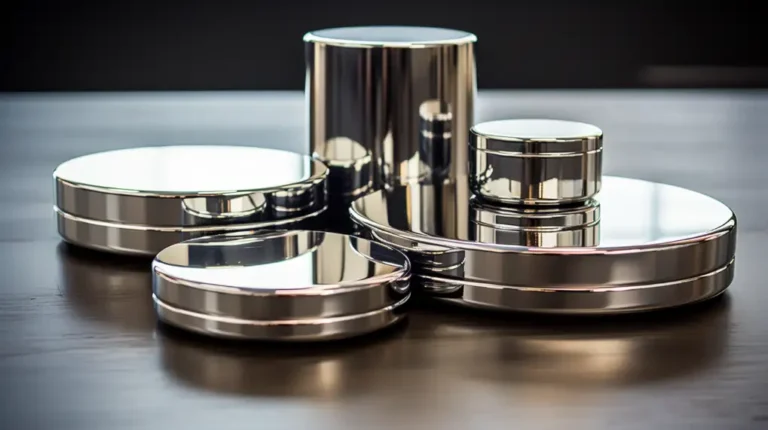
Understanding Electropolishing
What is electropolishing?
The electrochemical process of electropolishing removes a thin material layer from the metal surface. This results in a shiny and smooth finish. This process, also known as reverse plating or re-plating, improves the corrosion resistance of metals and enhances their appearance.
Process Overview
Selecting Electrolytes
The correct electrolyte can make or break electropolishing. The electrolyte is an acidic solution that helps remove material uniformly from the metal surface.
Equipment and Setup
Electropolishing requires the following components:
- Electrolyte: An acidic solution that facilitates the removal of material.
- Cathode: The electrode that completes the circuit.
- Anode: The metal component that is electropolished.
- Temperature control: Maintaining the electrolyte between 77-83 degrees is crucial for optimal results.
- Electrical current: The electrical density varies depending on the electrolyte. It can range from 140 amps to 250 amps.
- Time: The length of time that the metal is exposed to electrical current affects the final finish.
The Step-by-Step Procedure
- Preparation: Cleanse the metal surface of any contaminants.
- Immersion: Submerge the anode (metal part) and the cathode into the electrolyte.
- Electropolishing: Use direct current to cause the metal ions and smooth the surface.
- Rinsing: Remove the part and thoroughly rinse to remove any remaining electrolytes.
- Drying: Dry the parts to prevent water spots or stains.
Advantages of Electropolishing
Surface Smoothness
Electropolishing can improve both its appearance and performance by removing the microscopic peaks and valleys of a surface.
Corrosion resistance
It improves the corrosion resistance of metals by removing surface impurities and forming a passivated layer.
Biocompatibility
The surfaces of electropolished metals are biocompatible and free from contaminants, which makes them ideal for food and medical processing.
Disadvantages of Electropolishing
Material Limitations
Electropolishing is not suitable for all metals. This process best suits stainless steel, certain nickel alloys, and aluminum. Some metals, such as titanium and zinc, may not produce the desired results.
Cost considerations
Due to the use of specialized chemicals and equipment, electropolishing is more expensive than mechanical sanding. The extra cost might not be justified for applications that do not require high precision.
Understanding Mechanical Polishing
What is mechanical polishing?
The mechanical polishing process grinds and buffs a metal’s surface to produce a smooth finish. This method removes imperfections from metal surfaces, improves aesthetics, and prepares them for further processing.
Process Overview
Tools and Abrasives
For mechanical polishing, you will need a variety of tools and abrasives. These include grinding wheels, sandpapers, polishing pads, and compounds. The material to be polished and the desired result will determine the abrasive used.
Techniques and methods
Different techniques are used in mechanical polishing, such as grinding and buffing. Each technique has its applications and results, from removing deep scratches to achieving a mirrored finish.
The Step-by-Step Procedure
- Prepare: Cleanse the metal surface and remove contaminants. Cleaning the metal surface with solvents and degreasers will ensure that dirt or oil won’t interfere with the polishing.
- Initial Grinder: Use coarse abrasives (e.g., 60-80 grit) to remove major imperfections and rough areas. This step can involve removing 0.5 mm or more of material to remove deep scratches and flatten the surface.
- Intermediate polishing: Apply medium abrasives (e.g., 120-240 grit) to smooth the surface further and remove any remaining roughness. This stage removes approximately 0.1mm of material and starts to give the surface a uniform finish.
- Final polishing: Use fine abrasives (e.g., 400-600 grit) and polishing compounds to achieve the desired finish. This stage removes approximately 0.02 mm and produces a highly reflective finish.
- Cleaning: Remove all polishing compounds and debris from the surface. You can use ultrasonic cleaning or high-pressure washing to remove any polishing residues.
Advantages of Mechanical Polishing
Versatility
The mechanical polishing process can be used on various metals and alloys. This makes it an excellent option for several applications.
Surface Customization
This method offers a great deal of flexibility. You can choose from a variety of abrasives to achieve different finishes.
Cost Efficiency
The mechanical polishing method is more cost-effective than any other polishing method. It is less expensive and requires less equipment.
Disadvantages of Mechanical Polishing
Surface Damage
Incorrect use of abrasive tools can cause surface damage, such as scratches and gouges. You need skilled technicians to avoid these problems and achieve a high-quality finish.
Surface Smoothness Limitations
Electropolishing may be a better option for applications that require ultra-smooth and reflective surfaces. Electropolishing is a good choice for applications that require ultra-smooth surfaces.
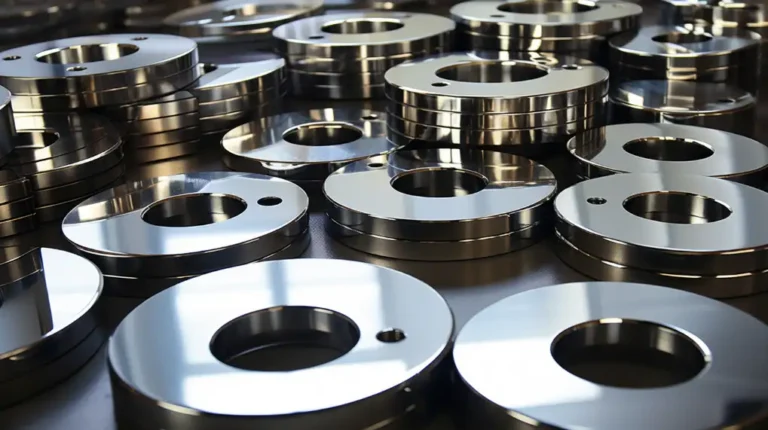
Comparative Analysis: Electropolishing vs Mechanical Polishing
Surface Quality
Smoothness and reflection
Electropolishing: This method produces a superior finish and reflectivity by removing an even layer of material on a microscopic scale. Ra (roughness) values can be as low as 0.1 m, giving a mirror finish.
Mechanical polishing: While capable of producing an even finish, mechanical polishing typically achieves a Ra value between 0.2 and 0.5 micrometers. The degree of reflectivity depends on the abrasives and the technician’s skill but does not usually match the high shine of electropolishing.
Microstructural Effects
Electropolishing: This process improves the surface of metals by reducing irregularities in microstructure, improving corrosion resistance and durability.
Mechanical Grinding: Mechanical grinding can cause micro-scratches and may also introduce stress to the material. This could affect its performance over time and its corrosion resistance.
Material Compatibility
Metals and Alloys
Electropolishing: Best suits stainless steel, aluminum, and certain nickel-based alloys. This method may not work for certain materials, such as titanium or zinc.
Mechanical polishing: Versatile, it can be used on various metals, including stainless steel, aluminum, brass, copper, and titanium.
Other Materials
Electropolishing: Due to the nature of the electrochemical process, it is limited to materials that conduct electricity.
Mechanical polishing: Can be used for non-metallic materials such as ceramics and plastics, provided the appropriate abrasives are used.
Application Suitability
Medical Devices
Electropolishing: Ideal for medical equipment due to the ability to create smooth, biocompatible surfaces that are free of contaminants.
Mechanical Polishing: Used for medical devices requiring less stringent surface finishes but may achieve a different level of biocompatibility than electropolishing.
Equipment for Food and Beverage
Electropolishing: This process produces a smooth, clean, and corrosion-resistant surface, which is suitable for food and beverage equipment.
Mechanical Polishing: This can be used for food and beverage equipment but may require additional cleaning steps to ensure hygiene.
Aerospace Components
Electropolishing: Used to smoothen surfaces and improve corrosion resistance for components that must be resistant and durable.
Mechanical polishing: Ideal for structural components, where extreme surface smoothness is not critical.
Automotive Parts
Electropolishing: Used on high-performance components and aesthetics that require a superior finish.
Mechanical Polishing: Commonly used for many automotive parts, providing an adequate finish for most applications.
Environmental Impact
Waste and Byproducts
Electroplashing: Produces chemical waste, which must be managed correctly to avoid environmental contamination.
Mechanical polishing: Produces waste materials (e.g., metal shavings or used abrasives), which can be recycled and disposed of with less environmental impact.
Energy Consumption
Electropolishing: This process requires electrical energy for the electrochemical reaction to continue. The amount of energy required depends on the size of the operation.
Mechanical polishing: This method uses mechanical energy. It may be less intensive but still consumes much power, depending on the equipment used and its duration.
Cost Analysis
Initial Setup
Electropolishing: High initial costs because special equipment and electrolyte solutions are needed.
Mechanical Polishing: Lower initial costs as it requires essential tools and abrasives.
Long-Term Costs
Electropolishing: Costs include maintenance, electrolyte replacement, and disposal of waste.
Mechanical polishing: Long-term expenses include the replacement of abrasives as well as wear and tear on polishing equipment.
Maintenance and Operation
Electropolishing: This process requires regular maintenance to maintain consistent quality.
Mechanical polishing: Regular tool checks are required, as is the replacement of worn-out abrasives and the proper operation of mechanical devices.
Quick Comparison: Electropolishing vs Mechanical Polishing
This quick reference will help you determine the best method for your project.
| Aspect | Electropolishing | Mechanical Polishing |
|---|---|---|
| Surface Smoothness | Ultra-smooth, mirror-like finish | Smooth finish, but less reflective |
| Corrosion Resistance | High | Moderate |
| Biocompatibility | Excellent | Good |
| Material Compatibility | Best for stainless steel, aluminum, nickel alloys | Versatile, suitable for most metals and some non-metals |
| Complex Geometries | Ideal for intricate shapes and internal surfaces | Limited to accessible surfaces |
| Cost | Higher due to specialized equipment and materials | Lower, more budget-friendly |
| Processing Time | Longer | Faster |
| Environmental Impact | Chemical waste management required | Physical waste, generally less environmental impact |
| Ideal Industries | Medical devices, food & beverage, aerospace, pharmaceuticals | Automotive, metal fabrication, consumer goods, construction |
| Custom Finishes | Limited | Wide range of finishes available |
| Hybrid Approach | Used for final finishing after mechanical polishing | Used initially to remove major imperfections |
Electropolishing vs Mechanical Polishing: How to make the best choice?
Why Choose Electropolishing?
When you need to:
- Need Ultra Smooth Surface: For projects that require a highly reflective, mirror-like finish.
- Corrosion Resistant: Ideal in environments that are prone to corrosion.
- Biocompatibility: Required for medical devices and implantables.
- Complex Shapes: Ideal for parts with complex geometries or internal surfaces.
Why mechanical polishing is a good option?
When mechanical polishing is preferred:
- Cost Effective: Ideal for projects with a tight budget.
- Versatile: Can be used on many metals and other materials.
- Custom finishes: Provides a variety of surface textures from matte to gloss.
- Quick turnaround: faster process for surfaces with less critical smoothness.
Hybrid approaches and their benefits
Combining mechanical polishing with electropolishing can provide the best of both:
- Initial mechanical polishing: Removes imperfections quickly and shapes material.
- Final electropolishing: Achieves superior smoothness and corrosion resistance.
- Balanced solution: Combining the strengths of both techniques for optimal results.
Conclusion
The specific requirements of your project will determine whether you choose electropolishing or mechanical polishing. Electropolishing offers high-quality finishes with enhanced corrosion resistance and biocompatibility. Mechanical polishing can be used for versatile, cost-effective applications with moderate surface requirements. Hybrid approaches combine both methods to achieve optimal results.
Do you need a reliable sheet metal parts manufacturer? Shengen is the place to go. We specialize in sheet metal laser cutting, bending, surface finish, and CNC Machining. Reach out to Shengen Today and seek help from professionals!
FAQ
Can mechanical and electropolishing be used together?
They can be used in conjunction. Electropolishing is a great way to create a reflective, smooth, and corrosion-resistant finish. This hybrid method combines high-quality results with cost-effectiveness.
What are the best materials for electropolishing?
Electropolishing is best for stainless steel, aluminum, and certain nickel-based alloys. These materials are smooth and resistant to corrosion. Electropolishing copper, brass, titanium, and zinc can produce varying results.
What is the difference between electropolishing and mechanical polishing in terms of cost?
Due to the specialized equipment, materials, and processes required for electropolishing, they are generally more costly. This process requires regular maintenance and waste disposal. Mechanical polishing can be cost-effective for projects with budget constraints or when ultra-smooth surfaces are not critical.
Which industries are most likely to benefit from polishing?
Due to its superior finish, electropolishing benefits industries such as medical devices, food, beverage, aerospace, and pharmaceuticals. Mechanical polishing offers a cost-effective finish for various applications, including automotive parts, consumer goods, construction, and metal fabrication.
More Resources:
Type of polishing – Source: Sybridge
Chemical-mechanical polishing – Source: Wikipedia
Hey, I'm Kevin Lee

For the past 10 years, I’ve been immersed in various forms of sheet metal fabrication, sharing cool insights here from my experiences across diverse workshops.
Get in touch

Kevin Lee
I have over ten years of professional experience in sheet metal fabrication, specializing in laser cutting, bending, welding, and surface treatment techniques. As the Technical Director at Shengen, I am committed to solving complex manufacturing challenges and driving innovation and quality in each project.

